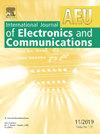EHRP-WSN: Energy-Efficient Hyperheuristic Routing Protocol for Wireless Sensor Networks
IF 3.2
3区 计算机科学
Q2 ENGINEERING, ELECTRICAL & ELECTRONIC
Aeu-International Journal of Electronics and Communications
Pub Date : 2025-09-24
DOI:10.1016/j.aeue.2025.156044
引用次数: 0
Abstract
In Wireless Sensor Networks (WSNs), the energy efficiency of sensor nodes is a major concern, as these nodes quickly deplete their energy during data transmission. This leads to network overhead and hotspot problems. To address these issues, an Energy-Efficient Hyperheuristic Routing Protocol (EHRP-WSN) is proposed. The proposed protocol integrates Q-learning with a BES metaheuristic routing algorithm. Q-learning selects a forwarder node (FN) based on experience-driven heuristics, while BES determines the most energy-efficient path for transmission to the base station. This hyperheuristic method is based on an optimal decision-making approach. Therefore, EHRP-WSN minimizes unnecessary transmissions by forwarding only optimal data to the base station (BS) through optimal routes. Simulation results demonstrate that EHRP-WSN outperforms existing metaheuristic routing protocols such as HMBCR, GAPSO-H, EPO-BES, MOCRAW, and MH-ARO. EHRP-WSN also compares with the Q-learning protocol, such as EAQ-AODV and QTAR. The protocol achieves a notable average energy consumption (AEC) from 0.0108 J to 0.0423 J, a packet delivery ratio (PDR) of 96.47%, alive node 98%, throughput ranging from 856 to 1387 bits/s, and average delay (AD) from 0.0111 ms to 0.0169 ms. These results validate the effectiveness of EHRP-WSN in enhancing energy efficiency and overall performance in WSN environments.
EHRP-WSN:无线传感器网络节能超启发式路由协议
在无线传感器网络(WSNs)中,传感器节点的能量效率是一个主要问题,因为这些节点在数据传输过程中会迅速耗尽能量。这会导致网络开销和热点问题。为了解决这些问题,提出了一种节能超启发式路由协议(EHRP-WSN)。该协议将q -学习与BES元启发式路由算法相结合。Q-learning基于经验驱动的启发式方法选择转发节点(FN),而BES则确定传输到基站的最节能路径。这种超启发式方法基于最优决策方法。因此,EHRP-WSN通过最优路由将最优数据转发给基站(BS),从而最大限度地减少不必要的传输。仿真结果表明,EHRP-WSN优于现有的HMBCR、GAPSO-H、EPO-BES、MOCRAW和MH-ARO等元启发式路由协议。EHRP-WSN还与Q-learning协议EAQ-AODV和QTAR进行了比较。该协议的平均能耗(AEC)在0.0108 ~ 0.0423 J之间,包投递率(PDR)为96.47%,活节点为98%,吞吐量在856 ~ 1387 bits/s之间,平均时延(AD)在0.0111 ~ 0.0169 ms之间。这些结果验证了EHRP-WSN在WSN环境中提高能源效率和整体性能的有效性。
本文章由计算机程序翻译,如有差异,请以英文原文为准。
求助全文
约1分钟内获得全文
求助全文
来源期刊
CiteScore
6.90
自引率
18.80%
发文量
292
审稿时长
4.9 months
期刊介绍:
AEÜ is an international scientific journal which publishes both original works and invited tutorials. The journal''s scope covers all aspects of theory and design of circuits, systems and devices for electronics, signal processing, and communication, including:
signal and system theory, digital signal processing
network theory and circuit design
information theory, communication theory and techniques, modulation, source and channel coding
switching theory and techniques, communication protocols
optical communications
microwave theory and techniques, radar, sonar
antennas, wave propagation
AEÜ publishes full papers and letters with very short turn around time but a high standard review process. Review cycles are typically finished within twelve weeks by application of modern electronic communication facilities.

 求助内容:
求助内容: 应助结果提醒方式:
应助结果提醒方式:


